 The Black Eyed snakes got our attention a few years back with theirdebut: a quaint but forceful tribute to the Delta Blues from a politequartet fronted by Chicken Bone George, whose years of repression,living under a different guise and keeping the volume down has made himyearn to break free. The second full-length release is even morecommanding as it's louder, noisier, and far more aggressive. Rise Up!wastes no time and no space as it opens with the one note intro, thenblast, of the album's title track. Without a second to spare, the groupbarrels through another after another in the onslaught of wall-shakingguitars, loud drums and percussion, and a screaming voice, distortedalmost completely beyond recognition. In the years this outfit has beenplaying and recording, their sound has become notably tighter androugher at the same time, and with a variety of songs ranging fromunder the one minute mark to over eight minutes, it's far frompredictable. Rise Up is dirty, sexy, and edgy enough to holdthe attention for the 40 minute duration. Accompanying the 11 originaltunes (and one Swans cover) are two videos. "Rise Up!" is a differentversion than what's available at the band's web site, with tons ofaggressive stock footage of wars, bombs, and fights, while "Good WomanBlues" is a hilarious conceptual video of the group getting violentlywrestled in the ring by a powerful woman.
The Black Eyed snakes got our attention a few years back with theirdebut: a quaint but forceful tribute to the Delta Blues from a politequartet fronted by Chicken Bone George, whose years of repression,living under a different guise and keeping the volume down has made himyearn to break free. The second full-length release is even morecommanding as it's louder, noisier, and far more aggressive. Rise Up!wastes no time and no space as it opens with the one note intro, thenblast, of the album's title track. Without a second to spare, the groupbarrels through another after another in the onslaught of wall-shakingguitars, loud drums and percussion, and a screaming voice, distortedalmost completely beyond recognition. In the years this outfit has beenplaying and recording, their sound has become notably tighter androugher at the same time, and with a variety of songs ranging fromunder the one minute mark to over eight minutes, it's far frompredictable. Rise Up is dirty, sexy, and edgy enough to holdthe attention for the 40 minute duration. Accompanying the 11 originaltunes (and one Swans cover) are two videos. "Rise Up!" is a differentversion than what's available at the band's web site, with tons ofaggressive stock footage of wars, bombs, and fights, while "Good WomanBlues" is a hilarious conceptual video of the group getting violentlywrestled in the ring by a powerful woman.samples:


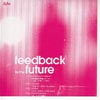 Shoegazing is a genre name that I've always found extremelyinteresting. When you think about it, it is difficult to believe that acollection of musicians reputed to be frozen by downcast eyes couldperpetrate music so full of lush, expansive landscapes and gregariousmelodies. It seems like such a fearful, reticent posture particularlyin the face of music that seems so open and free. Feedback to the Futureis a slice of that dissonance, the very title being contradictory forthis look back. Billing itself as a compilation of eleven shoegazingsongs from those heady days of 1990 to 1992, Feedback serves asa brief dip into the bands of the period. The opening track immersesimmediately with a bright open chord that develops into a fuzzy riffbeneath the major scale melody of Revolver's "Heaven Sent an Angel."It's a bouncy, buoyant song that's an excellent opening shot of earlymorning light. It reminds me that listening to dream pop can be likemainlining sunshine, if that were at all possible. Blind Mr. Jones'"Small Caravan" and Slowdive's "Catch the Breeze" take a less exuberantpath than the opener, but are no less full of shifting textures andbeautiful passages. The latter song floats delicately, rising andfalling in swells of guitar and intertwining vocals that radiatethrough the polished cacophony. Ride's "Like a Daydream" bursts forthin a rush, with a pulsing chug that blooms into the overlapping melodichooks and vocals that find themselves deep in your brain for days afterhearing them. Representing the United States on this British dominatedcompilation is Boston's Drop Nineteens who appear with the song"Winona." The track does not have some of the hallmarks of shoegazingon the other side of the Atlantic, like the crescendo of guitar washes,but it does retain the sense of melody and song craft that makes eachsong on this compilation relentlessly catchy. Feedback to the Futureis a good introduction to some (but certainly not all, a notableexception being My Bloody Valentine) of the bands that made this stylepopular. It's not a perfect document, but hopefully it will encouragethe curious to go about filling in all the blanks on their own.
Shoegazing is a genre name that I've always found extremelyinteresting. When you think about it, it is difficult to believe that acollection of musicians reputed to be frozen by downcast eyes couldperpetrate music so full of lush, expansive landscapes and gregariousmelodies. It seems like such a fearful, reticent posture particularlyin the face of music that seems so open and free. Feedback to the Futureis a slice of that dissonance, the very title being contradictory forthis look back. Billing itself as a compilation of eleven shoegazingsongs from those heady days of 1990 to 1992, Feedback serves asa brief dip into the bands of the period. The opening track immersesimmediately with a bright open chord that develops into a fuzzy riffbeneath the major scale melody of Revolver's "Heaven Sent an Angel."It's a bouncy, buoyant song that's an excellent opening shot of earlymorning light. It reminds me that listening to dream pop can be likemainlining sunshine, if that were at all possible. Blind Mr. Jones'"Small Caravan" and Slowdive's "Catch the Breeze" take a less exuberantpath than the opener, but are no less full of shifting textures andbeautiful passages. The latter song floats delicately, rising andfalling in swells of guitar and intertwining vocals that radiatethrough the polished cacophony. Ride's "Like a Daydream" bursts forthin a rush, with a pulsing chug that blooms into the overlapping melodichooks and vocals that find themselves deep in your brain for days afterhearing them. Representing the United States on this British dominatedcompilation is Boston's Drop Nineteens who appear with the song"Winona." The track does not have some of the hallmarks of shoegazingon the other side of the Atlantic, like the crescendo of guitar washes,but it does retain the sense of melody and song craft that makes eachsong on this compilation relentlessly catchy. Feedback to the Futureis a good introduction to some (but certainly not all, a notableexception being My Bloody Valentine) of the bands that made this stylepopular. It's not a perfect document, but hopefully it will encouragethe curious to go about filling in all the blanks on their own.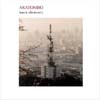 The city groans and grinds on and on. Even in the most tranquil escapesthe roar of traffic is ever present. Maybe for many trapped in therepetition of 9 to 5 it gets blanked out with familiarity. However,travel to the other side of the world to an alien culture and the earsmight prick up. Paul Kirk, a Scotsman relocated to Tokyo, becamefascinated by the urban drone, flux and shuffle all around him. AsAkatombo, he reconfigures the heart of that busy city atmosphere into adislocated merry-go-round ride that is occasionally ominous but usuallybeat happy. Informed by hip hop, but in no way beholden to it, Akatombofinds the drone at the heart of the city and makes it sing. Mobilephones wail, radios tune in and out, babbling voices appear and vanishinto the crowd. This is like a wind blowing a dense smog intofascinating new shapes, a mind grooving on the endless noise of fastpaced city life. Like labelmates Silo, Akatombo manages to sound atonce human and machine, catching the future as it flies. Somecomparisons would be King Coffey's Drain, Muslimgauze and even Faust,the diversity of whom should give some idea of the originality here.This is a hell of an addictive listen and is easily the best album I'veheard from a new artist this year. Gulping oxygen beyond a sea ofMogwai impersonators, Akatombo pushes the 'post-rock' envelope intopositive new shapes. If enough people were clued up to this it couldraise the stakes like that first Tortoise album did.
The city groans and grinds on and on. Even in the most tranquil escapesthe roar of traffic is ever present. Maybe for many trapped in therepetition of 9 to 5 it gets blanked out with familiarity. However,travel to the other side of the world to an alien culture and the earsmight prick up. Paul Kirk, a Scotsman relocated to Tokyo, becamefascinated by the urban drone, flux and shuffle all around him. AsAkatombo, he reconfigures the heart of that busy city atmosphere into adislocated merry-go-round ride that is occasionally ominous but usuallybeat happy. Informed by hip hop, but in no way beholden to it, Akatombofinds the drone at the heart of the city and makes it sing. Mobilephones wail, radios tune in and out, babbling voices appear and vanishinto the crowd. This is like a wind blowing a dense smog intofascinating new shapes, a mind grooving on the endless noise of fastpaced city life. Like labelmates Silo, Akatombo manages to sound atonce human and machine, catching the future as it flies. Somecomparisons would be King Coffey's Drain, Muslimgauze and even Faust,the diversity of whom should give some idea of the originality here.This is a hell of an addictive listen and is easily the best album I'veheard from a new artist this year. Gulping oxygen beyond a sea ofMogwai impersonators, Akatombo pushes the 'post-rock' envelope intopositive new shapes. If enough people were clued up to this it couldraise the stakes like that first Tortoise album did.  Deep beneath the ocean is a world of mystery, wonder, darkness, anddanger. Even if it weren't for the cover art of this German duo'sbrilliant new album, there is unmistakably no other place in theuniverse that has influenced the sounds and movement of what isrepresented within. These drones are not passive in the least. Thedepth and volume are all encompassing, and moving slowly but steadilylike an ancient and lonely large whale through the graveyards ofshipwrecks, at the very beginning of the food chain in which all livingcreatures depend. Recorded live in the studio without overdubs, thefirst two parts are based on live performances the band was touringaround with in 2001, the first being a dark blue rumble, heavy on thelow end and marked by patient melodic movement, the second withswirling guitar strums and leads like the sun coming through in bendedbands of beams: flickering, reflected, and refracted. The intangibleoverwhelming feeling of weight and pressure is unavoidable andinescapable, like being frozen in a dream, unable to move, but calm andcomforting all the same. Around the half-way mark, it dips back intothe darker regions as pitch and pace slow down deeper and deeper anddeeper and deeper yet into the cold, black unknown. The third part wasrecorded as an afterthought, and is described as a new ending. Itsbrightness and chugging backwards-sounding guitars brilliantly accentthe feel that it is a journey which is reaching its end. At this point,it feels that the central figure in the journey seems to be a vessyl ofsome sort, and the 16-minute Part 3 is thematic of a gloriousresurfacing, reintroduction to the bright light of day, and returningto solid ground. But, as the brightness comes, so does an ominous sensethat all might not be right. The world looks different than before, theplaces are familiar but everything's seemed to have changed. Thecredits may roll but this is certainly not the end.
Deep beneath the ocean is a world of mystery, wonder, darkness, anddanger. Even if it weren't for the cover art of this German duo'sbrilliant new album, there is unmistakably no other place in theuniverse that has influenced the sounds and movement of what isrepresented within. These drones are not passive in the least. Thedepth and volume are all encompassing, and moving slowly but steadilylike an ancient and lonely large whale through the graveyards ofshipwrecks, at the very beginning of the food chain in which all livingcreatures depend. Recorded live in the studio without overdubs, thefirst two parts are based on live performances the band was touringaround with in 2001, the first being a dark blue rumble, heavy on thelow end and marked by patient melodic movement, the second withswirling guitar strums and leads like the sun coming through in bendedbands of beams: flickering, reflected, and refracted. The intangibleoverwhelming feeling of weight and pressure is unavoidable andinescapable, like being frozen in a dream, unable to move, but calm andcomforting all the same. Around the half-way mark, it dips back intothe darker regions as pitch and pace slow down deeper and deeper anddeeper and deeper yet into the cold, black unknown. The third part wasrecorded as an afterthought, and is described as a new ending. Itsbrightness and chugging backwards-sounding guitars brilliantly accentthe feel that it is a journey which is reaching its end. At this point,it feels that the central figure in the journey seems to be a vessyl ofsome sort, and the 16-minute Part 3 is thematic of a gloriousresurfacing, reintroduction to the bright light of day, and returningto solid ground. But, as the brightness comes, so does an ominous sensethat all might not be right. The world looks different than before, theplaces are familiar but everything's seemed to have changed. Thecredits may roll but this is certainly not the end. The funny, aloof, quirky Dan Bern is dead, and has been replaced by amature, kindred spirit-type songwriter with his heart firmly on hissleeve on Fleeting Days,and he's all the better for it. Well, not really, as the flippanttongue still wags a bit here and there, but for the most part Bern doesseem to be keeping it away from his cheek and going straight forSerious-singer/songwriter-ville. Luckily, once again he's brought alongthe right backing band in the IJBC (the International Jewish BankingConspiracy) to flesh out these songs, as the arrangements are tight,solid, and never seem like too much. Bern seems more confident in thebandleader role than he's ever been, and as his music and lyrics takeon a more mature feel the subject matter invariably goes where I'dexpect: relationships. Dan's always had a feel for this ground (see"Rome" off his debut for the quintessential "why'd you leave me?"ditty), but his pleas are more heartfelt, more gripping here. On thefirst track, "Baby Bye Bye:" "I turn off the phone so if you don't callit's all right/and maybe I won't listen to nothing tonight," after thedissolution of his affair with a fellow music fan. I'm pretty sureeveryone's been there, and I know I have. On "Chain Around My Neck," hesings "Don't ask you to believe me now, I don't deserve your trust...Next time that I see you let's pretend it's our first date," and youdon't despise him. There's a truth here, which is probably the onething that seemed absent in all of his previous records. I liked thefunny Dan Bern, but at the end of the day I couldn't really believe hewas as absurd as he sounded. On Fleeting Days I believe every word, and it puts Bern solidly on the map of Americana.
The funny, aloof, quirky Dan Bern is dead, and has been replaced by amature, kindred spirit-type songwriter with his heart firmly on hissleeve on Fleeting Days,and he's all the better for it. Well, not really, as the flippanttongue still wags a bit here and there, but for the most part Bern doesseem to be keeping it away from his cheek and going straight forSerious-singer/songwriter-ville. Luckily, once again he's brought alongthe right backing band in the IJBC (the International Jewish BankingConspiracy) to flesh out these songs, as the arrangements are tight,solid, and never seem like too much. Bern seems more confident in thebandleader role than he's ever been, and as his music and lyrics takeon a more mature feel the subject matter invariably goes where I'dexpect: relationships. Dan's always had a feel for this ground (see"Rome" off his debut for the quintessential "why'd you leave me?"ditty), but his pleas are more heartfelt, more gripping here. On thefirst track, "Baby Bye Bye:" "I turn off the phone so if you don't callit's all right/and maybe I won't listen to nothing tonight," after thedissolution of his affair with a fellow music fan. I'm pretty sureeveryone's been there, and I know I have. On "Chain Around My Neck," hesings "Don't ask you to believe me now, I don't deserve your trust...Next time that I see you let's pretend it's our first date," and youdon't despise him. There's a truth here, which is probably the onething that seemed absent in all of his previous records. I liked thefunny Dan Bern, but at the end of the day I couldn't really believe hewas as absurd as he sounded. On Fleeting Days I believe every word, and it puts Bern solidly on the map of Americana.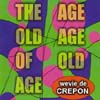 With this new mini-album, Wevie de Crepon follows Kai Althoff'sWorkshop as the newest pleasant surprise from the Sonig label. TheMouse on Mars-owned imprint has consistently combated IDM's sterilespectre with highly original electronic music, often of a popsensibility, but Wevie, like Workshop before them, throw evenestablished Sonig innovators for a loop. Wevie de Crepon, previouslyrecording as Wevie Stonder for Skam records, have made an absurd,sample-ful comedy record set to a (jarringly) diverse bed of electronicsong-craft. Comparisons to Negativland come easily, but Wevie's obtuse,thoroughly apolitical content puts them somewhere else entirely. Thesongs' two-minute pop bursts also separate them from Negativland'ssprawling cut-up orgies; most tracks on The Age Old Age of Old Agefeature a grounding beat with one lengthy sample laid on top, actingalmost as a vocal to the jubilant backing music. The result is that themost absurd of sampled material (like British pseudo-crime dramadialogue, or David Lynch digressing about a duck's eyeball) meshesseamlessly with music that would by itself be marketable to the IDMcrowd. These backing tracks range from full on drill n'bass hoe-downsand Too Pure-ish bliss-out sections, to bouncy, kitsch-laden groovesrecalling Stock, Hausen & Walkman. A keen appreciation of kitsch isessential to the enjoyment of this music, for no level of pristineproduction (certainly present here) is enough to prevent the averagelistener from muttering "the hell is this, then" at least once. One iswarned, after all, by the atrocious cover art; Wevie de Crepon is notfor everyone. The Age Old Age of Old Age runs most "serious"electronic music through a hilarious cycle of degeneration that will beunsettling for those hesitant to give up their respective ghosts.Perhaps this music contains a political agenda after all, one promotingself-criticism, patience, and most of all, a sense of humor.
With this new mini-album, Wevie de Crepon follows Kai Althoff'sWorkshop as the newest pleasant surprise from the Sonig label. TheMouse on Mars-owned imprint has consistently combated IDM's sterilespectre with highly original electronic music, often of a popsensibility, but Wevie, like Workshop before them, throw evenestablished Sonig innovators for a loop. Wevie de Crepon, previouslyrecording as Wevie Stonder for Skam records, have made an absurd,sample-ful comedy record set to a (jarringly) diverse bed of electronicsong-craft. Comparisons to Negativland come easily, but Wevie's obtuse,thoroughly apolitical content puts them somewhere else entirely. Thesongs' two-minute pop bursts also separate them from Negativland'ssprawling cut-up orgies; most tracks on The Age Old Age of Old Agefeature a grounding beat with one lengthy sample laid on top, actingalmost as a vocal to the jubilant backing music. The result is that themost absurd of sampled material (like British pseudo-crime dramadialogue, or David Lynch digressing about a duck's eyeball) meshesseamlessly with music that would by itself be marketable to the IDMcrowd. These backing tracks range from full on drill n'bass hoe-downsand Too Pure-ish bliss-out sections, to bouncy, kitsch-laden groovesrecalling Stock, Hausen & Walkman. A keen appreciation of kitsch isessential to the enjoyment of this music, for no level of pristineproduction (certainly present here) is enough to prevent the averagelistener from muttering "the hell is this, then" at least once. One iswarned, after all, by the atrocious cover art; Wevie de Crepon is notfor everyone. The Age Old Age of Old Age runs most "serious"electronic music through a hilarious cycle of degeneration that will beunsettling for those hesitant to give up their respective ghosts.Perhaps this music contains a political agenda after all, one promotingself-criticism, patience, and most of all, a sense of humor.  Sometimes it's all about figuring out what ingredient doesn't work,apparently. When Sunny Day Real Estate split in 1995 and then reformedin 1997 without original bassist Nate Mendel, some thought thatfrictions were still present that may have caused the split, preventingMendel from returning to the fold. Then in 2001, just when the bandseemed to be branching out into new territory, the band split again,leaving many scratching their heads: why split up at the height of yourpopularity, reform, then split up again right when all seemed to be inplace? According to recent interviews with band members, it wasoriginal guitarist Dan Hoerner who caused some of the troubles, makingit very difficult to work with him. So, when vocalist/guitarist JeremyEnigk and drummer William Goldsmith wanted to record some new material,they decided to go it alone, only to have Mendel accept the invitationthis time. Obviously, the name would have to change, as there waslittle mileage left in it, so they chose The Fire Theft and headed tothe studio with Brad Wood. The result is a little bit SDRE and a wholelot breaking new ground, with myriad synthesizers (courtesy of Wood)and new noises making their way onto the record. Through it all,Enigk's voice is the anchor as it always has been, and the record is abold new beginning and another chance at success. "Faces in Disguise"off SDRE's The Rising Tideis a good frame of reference for this record, as the sound seems totake that track's atmospheric approach and build on it. "UncleMountain" is as impressive an album opener as I've heard this year,starting off muted and quiet then lunging for the death blow halfwaythrough. Elsewhere, "It's Over" and "Waste Time" show off classic Enigkwails and familiar guitar crunches fans will adore. It's a powerfuldebut, full of promise, and a redemption from the ashes of the past.Fire theft, indeed.
Sometimes it's all about figuring out what ingredient doesn't work,apparently. When Sunny Day Real Estate split in 1995 and then reformedin 1997 without original bassist Nate Mendel, some thought thatfrictions were still present that may have caused the split, preventingMendel from returning to the fold. Then in 2001, just when the bandseemed to be branching out into new territory, the band split again,leaving many scratching their heads: why split up at the height of yourpopularity, reform, then split up again right when all seemed to be inplace? According to recent interviews with band members, it wasoriginal guitarist Dan Hoerner who caused some of the troubles, makingit very difficult to work with him. So, when vocalist/guitarist JeremyEnigk and drummer William Goldsmith wanted to record some new material,they decided to go it alone, only to have Mendel accept the invitationthis time. Obviously, the name would have to change, as there waslittle mileage left in it, so they chose The Fire Theft and headed tothe studio with Brad Wood. The result is a little bit SDRE and a wholelot breaking new ground, with myriad synthesizers (courtesy of Wood)and new noises making their way onto the record. Through it all,Enigk's voice is the anchor as it always has been, and the record is abold new beginning and another chance at success. "Faces in Disguise"off SDRE's The Rising Tideis a good frame of reference for this record, as the sound seems totake that track's atmospheric approach and build on it. "UncleMountain" is as impressive an album opener as I've heard this year,starting off muted and quiet then lunging for the death blow halfwaythrough. Elsewhere, "It's Over" and "Waste Time" show off classic Enigkwails and familiar guitar crunches fans will adore. It's a powerfuldebut, full of promise, and a redemption from the ashes of the past.Fire theft, indeed.  Sound are the duo of Eric Lumbleau (of Vas Deferens Organization) and Joel Zoch. Their first release for Beta-Lactam Ring is the Screaming Zenith double LP beautifully packaged in a deluxe gatefold sleeve adorned with grotesquely distorted pornography. This is the first clue of the twisted sonic perversions waiting inside. The second clue is the dadaist song titles, full of goofy alliteration and lysergic wordplay. Sound's sound is a quivering gelatin of sinister whimsy: Aphex-style beat sequencing rubs shoulders with Numan-esque keyboards, fuzzy Western guitars, creepy voice loops and sudden, terrifying plunges into ring-modulated, echo-chambered oblivion.
Sound are the duo of Eric Lumbleau (of Vas Deferens Organization) and Joel Zoch. Their first release for Beta-Lactam Ring is the Screaming Zenith double LP beautifully packaged in a deluxe gatefold sleeve adorned with grotesquely distorted pornography. This is the first clue of the twisted sonic perversions waiting inside. The second clue is the dadaist song titles, full of goofy alliteration and lysergic wordplay. Sound's sound is a quivering gelatin of sinister whimsy: Aphex-style beat sequencing rubs shoulders with Numan-esque keyboards, fuzzy Western guitars, creepy voice loops and sudden, terrifying plunges into ring-modulated, echo-chambered oblivion.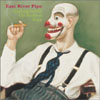 The essence of 'doing it yourself' is to avoid any hints of compromise, watering down, or loss of vision so that you may release a work that is totally and completely pure. It's a personal expression that is something to be proud of. Unfortunately, it seems that along the road to self-actualization some people eschew both quality control and thoughtful planning.
The essence of 'doing it yourself' is to avoid any hints of compromise, watering down, or loss of vision so that you may release a work that is totally and completely pure. It's a personal expression that is something to be proud of. Unfortunately, it seems that along the road to self-actualization some people eschew both quality control and thoughtful planning.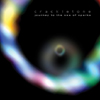 Jim Sutherland has quite a background as a composer of television andfilm scores. Crackletone is his somewhat minimalist, somewhat spooky,and somehow intriguing vehicle for composing drone-based pieces. I saythat the pieces are drone-based, but that really isn't fair: there area lot of different sounds used throughout the rather awkwardly namedalbum: what might be the sounds of a heart beating are combined withnauseating organ spills, a little too cleanly produced digital bleepsand bloops, and truly effective moans bubbling over with drifting windsand interstellar interference. The result of combining haunting andintriguing sounds with overused and bland ones makes for a see-sawexperience. At times the sounds really produce a sense of horror butthen they are interrupted by sounds that remind me that the horrificstuff can't possibly be real. In other words, what seems gritty, dirty,and realis revealed as fake because of sci-fi noises that remind me of blastersounds used in so many video games. The first track, "Crackletone," isa thirty-minute composition that manages to stay entrancing andbelievable despite some of the rather silly sounds used in it. "FondlePark" is nearly unlistenable. In fact, I only listened to it once andthat was only because I felt I had to so that I could be honest aboutthe album as a whole. "Journey to the Sea of Sparks" is probably thebest piece on the album, where a majority of those digital and cleansounds have been eliminated in favor of a rather stunning combinationof distorted grandfather clocks, evil hissing, and a truly strangemelody that appears half-way through and then disappears into the voidof space the rest of the sounds create. Maybe it's the sound of a stormas heard by someone on LSD or maybe its just the rumblings of aspace-monsters hungry stomach. In either case, it's entertaining. Ican't wholly reccomend this release, but I can't deny that I enjoy agood portion of it when I give it a spin; it's just that I don't oftenfeel compelled to listen to it.
Jim Sutherland has quite a background as a composer of television andfilm scores. Crackletone is his somewhat minimalist, somewhat spooky,and somehow intriguing vehicle for composing drone-based pieces. I saythat the pieces are drone-based, but that really isn't fair: there area lot of different sounds used throughout the rather awkwardly namedalbum: what might be the sounds of a heart beating are combined withnauseating organ spills, a little too cleanly produced digital bleepsand bloops, and truly effective moans bubbling over with drifting windsand interstellar interference. The result of combining haunting andintriguing sounds with overused and bland ones makes for a see-sawexperience. At times the sounds really produce a sense of horror butthen they are interrupted by sounds that remind me that the horrificstuff can't possibly be real. In other words, what seems gritty, dirty,and realis revealed as fake because of sci-fi noises that remind me of blastersounds used in so many video games. The first track, "Crackletone," isa thirty-minute composition that manages to stay entrancing andbelievable despite some of the rather silly sounds used in it. "FondlePark" is nearly unlistenable. In fact, I only listened to it once andthat was only because I felt I had to so that I could be honest aboutthe album as a whole. "Journey to the Sea of Sparks" is probably thebest piece on the album, where a majority of those digital and cleansounds have been eliminated in favor of a rather stunning combinationof distorted grandfather clocks, evil hissing, and a truly strangemelody that appears half-way through and then disappears into the voidof space the rest of the sounds create. Maybe it's the sound of a stormas heard by someone on LSD or maybe its just the rumblings of aspace-monsters hungry stomach. In either case, it's entertaining. Ican't wholly reccomend this release, but I can't deny that I enjoy agood portion of it when I give it a spin; it's just that I don't oftenfeel compelled to listen to it.
